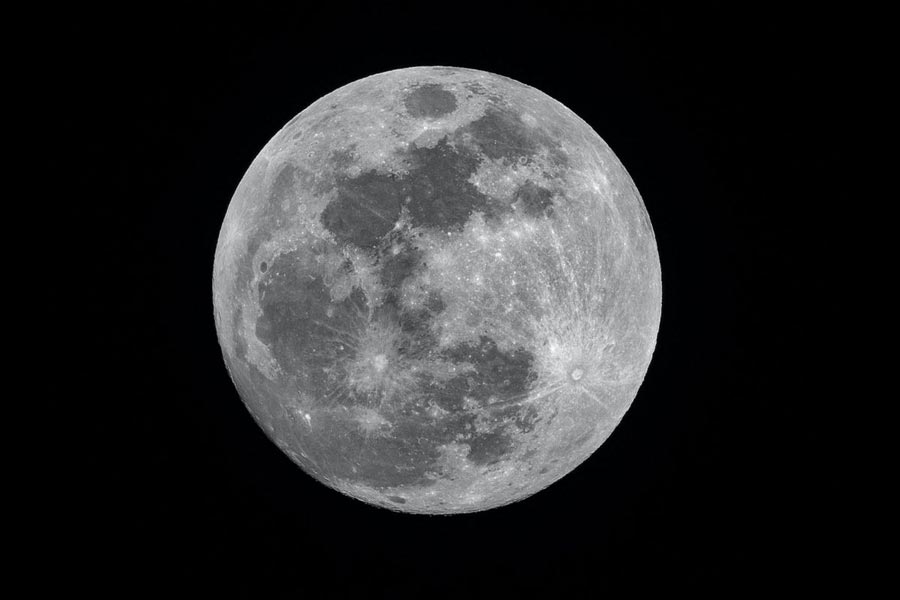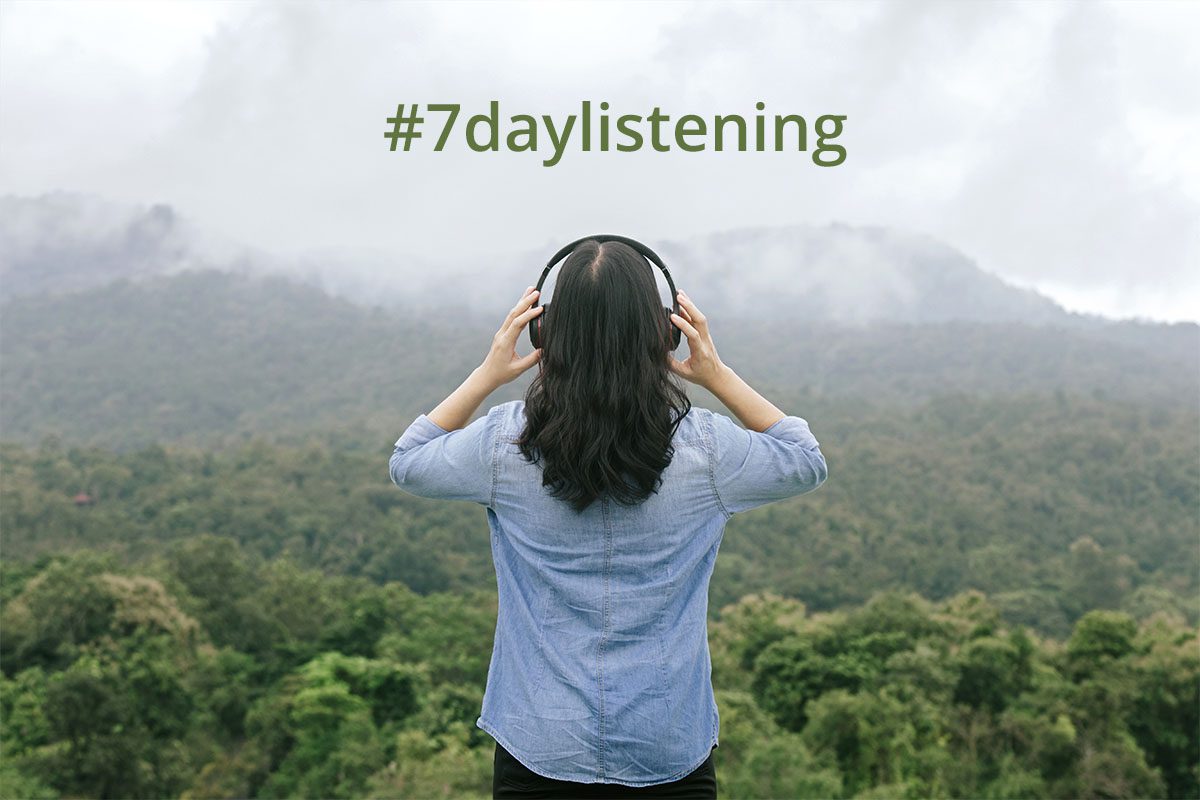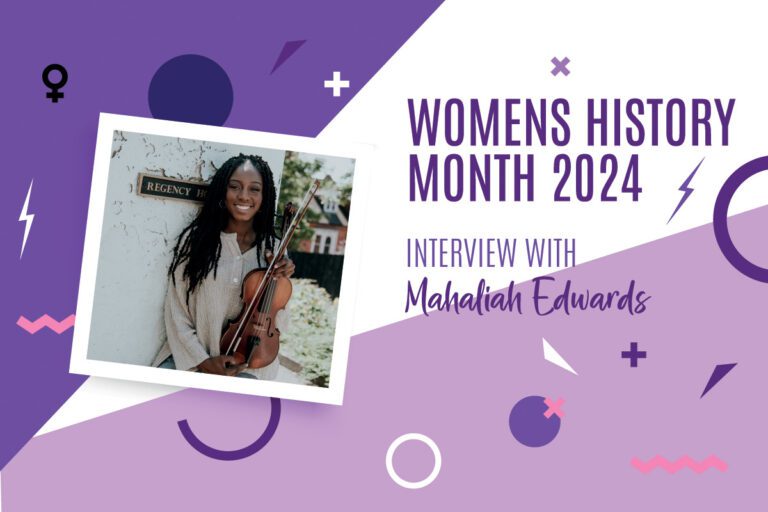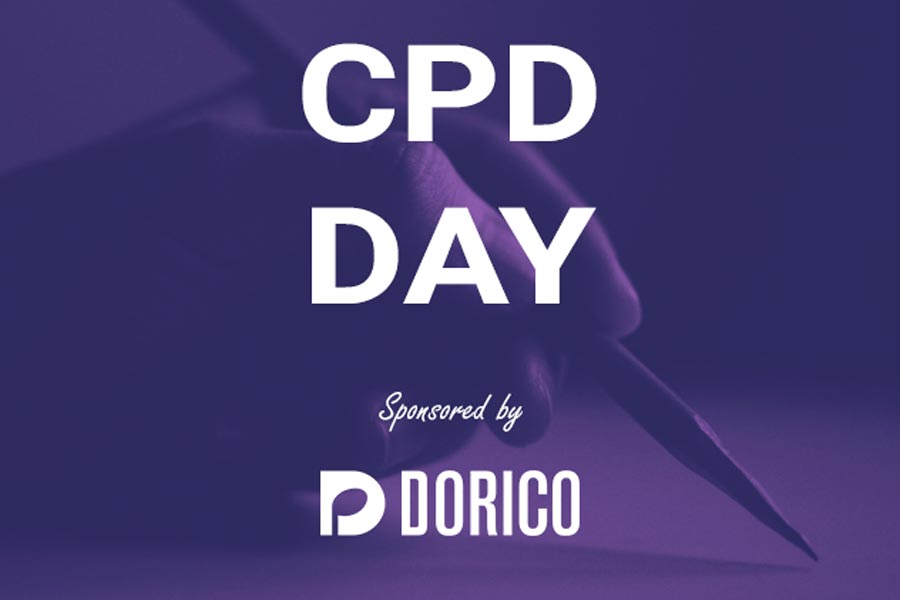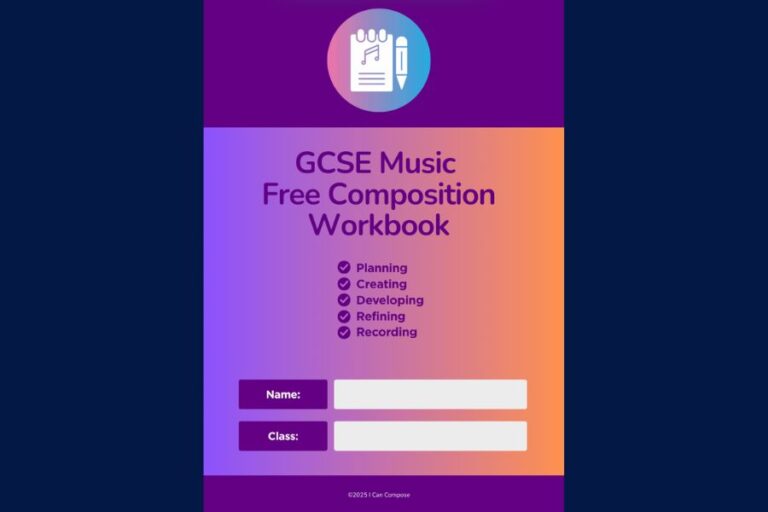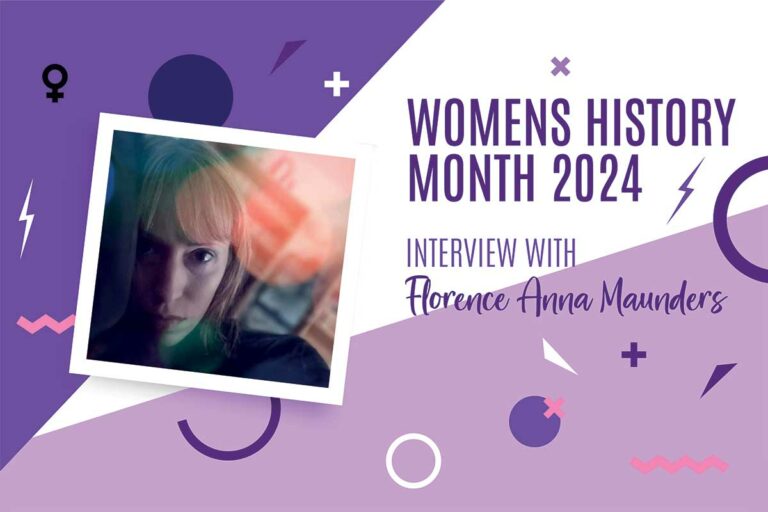In this guest blog post composer and music teacher David Beeby shares his experience and process of composing a large-scale piece for students to perform, to commemorate the 50th anniversary of the first astronauts landing on the moon.
Background to the commission
“Contact light, engine off… Tranquility Base here, the “Eagle” has landed!” With these words, the 250, 000 mile journey from Cape Kennedy, Florida, USA, ended in a successful landing on the surface of the moon. Astronauts Neil Armstrong and Edwin “Buzz” Aldrin settled the Lunar Excursion Module “Eagle” on the Sea of Tranquillity on 24th July 1969, a little less than a decade after President John F Kennedy had made the commitment… “to land a man on the moon, and return him safely to earth.”
I’ve long been fascinated by the immense technical achievements that were made both by the Russians and Americans in the post-war years, with the “space race” won first by the Russians with the first orbiting satellite “Sputnik”, then with Yuri Gagarin as the first man to fly in space. There was great determination in both countries to make the giant leap of technology to land on the moon. This was finally achieved within the last few months of the decade.
I was commissioned in 2019 to write a piece for full orchestra to mark the 50th Anniversary of that first moon-landing by SoundStorm, our local Music Education Agency who do great work for the young people in Bournemouth Christchurch & Poole under their inspirational leader, Michael Armstrong (no relation to the lunar pioneer). I was delighted to have the opportunity to create music that captured a sense of the excitement of lift-off, transit to the moon and the return to earth, with a central calmer passage to evoke the serenity of the moon, as Neil Armstrong took his “One small step for a man. One giant leap for mankind!” Additionally, I wanted to find a way of incorporating the cockpit audio as an integral part of the music.
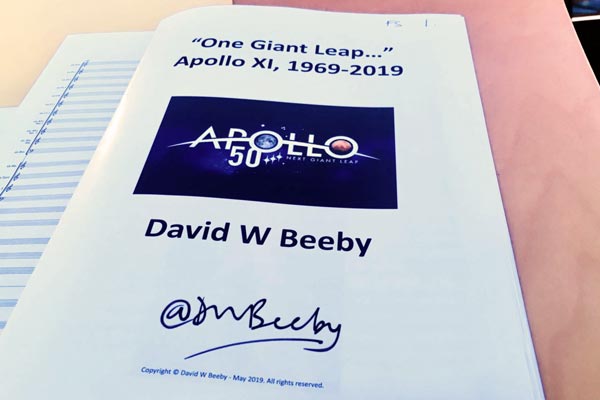
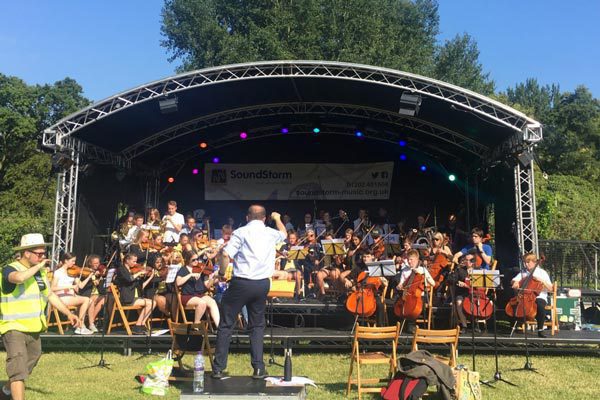
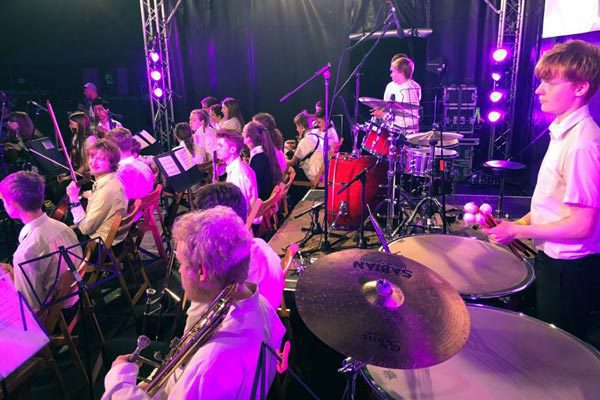
Creating the musical themes
Sometimes our musical creativity needs a helping hand and, as we know, “I Can Compose” gives us lots of interesting ways of providing that support. In this case, my inspiration came to me with some musical themes derived from three words associated with the Apollo XI mission: APOLLO – the project and flight code-name, COLUMBIA – the Command Module which carried the astronauts and their supplies of fuel and oxygen, and EAGLE – not only the code-name for the Lunar Excursion Module, but also the emblem of the United States of America.
I used a simple code (known as a cipher) to get the musical notes, something similar to that used by composers such as Robert Schumann, Dmitri Shostakovitch and many others. This so-called German Cipher uses “H” as B natural and “B” as B flat. This is the same code used to get BACH sounding as B flat, A, C, B natural, for instance.
Using this grid, it’s possible to convert words, names or phrases into musical themes. Just find a letter in the full alphabet section, just trace upwards to find the musical note. Sometimes, this works to give you some useful material, but maybe not always. At the very least, it can give the creativity a nudge in the right direction!

For me, this process gave me three workable themes which I felt could be taken further. Once these themes emerged, I also started to get a feel for the tempo and mood required for each one. For APOLLO, I wanted a strong sense of the energy, excitement and anticipation of launch. For COLUMBIA, a more expansive movement picks up the motion of the Command Module effortlessly heading towards the Moon, with “Isaac Newton doing most of the driving.” (Bill Anders, Apollo VIII) Finally, the music for EAGLE is meant to give a sense of the “magnificent desolation” described by Buzz Aldrin as he stepped onto the Lunar Surface some 20 minutes after Armstrong.
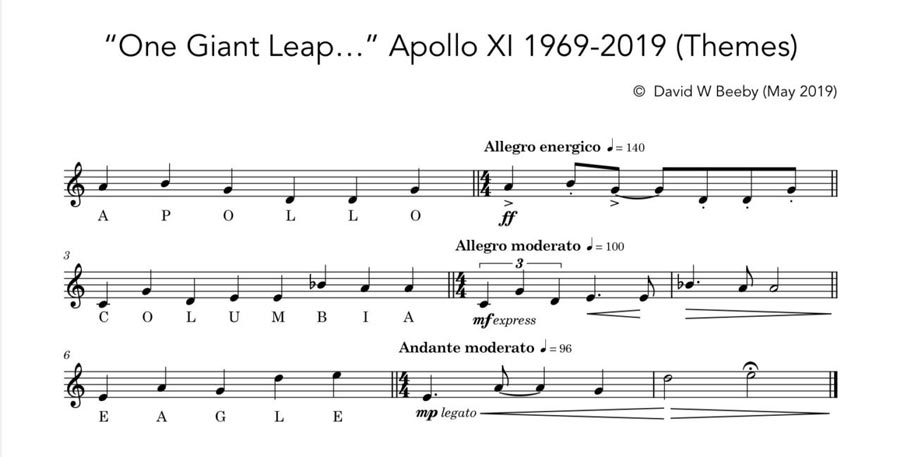
From initial ideas to large-scale composition
There’s much more to be said about the way that the composition of the music went from those initial themes to a large-scale piece for full orchestra; the process of improvisation and experimentation with harmonies and counter-melodies, the exploration of different sounds and the thoughts about how the music should be written to work for the young musicians in my orchestra.
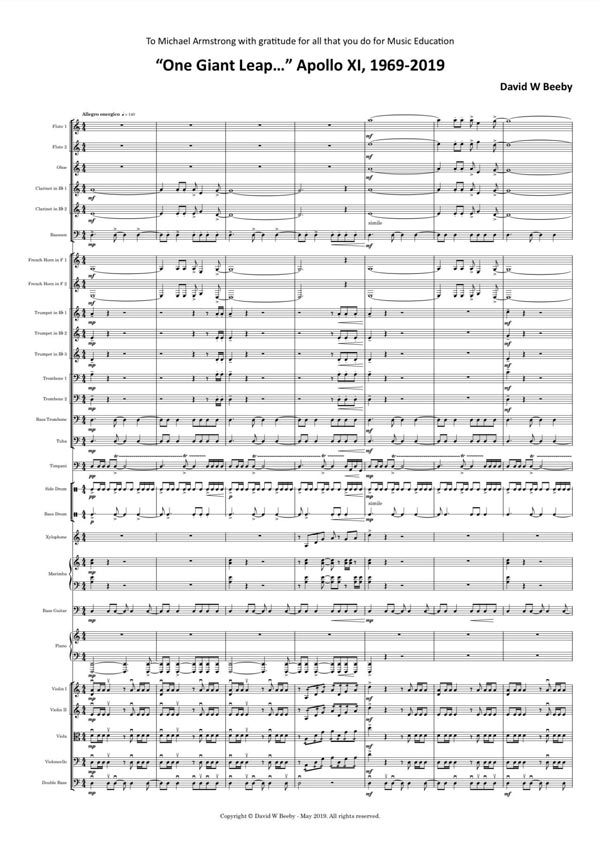
Realising the composition
The early stages of composition were carried out with rough notes on manuscript paper, but when I was ready to get everything together I turned to Steinberg’s “Dorico Pro” for the scoring. This superb scoring application allowed me to gather all the ideas together easily to score the music and eventually to create the orchestral parts.
In addition, a Y9 student at my school was interested in the Apollo “story” and my composition project and he created a video montage showing some actual video clips from the mission, as well as many stills from NASA’s library of the Apollo project. This was shown on a big screen when the piece was performed. Later in the composition process, I involved my A Level musicians in the checking of parts and proof-reading the details of dynamics and articulations, to make sure they made sense “on the page” and to track down inconsistencies and errors.
I hope you’ve enjoyed reading about my exploration of “One Giant Leap…” and the process I went through to create this music for SoundStorm’s “Transmissions” Festival in July 2019. I encourage other teachers to harness their own creativity and find an outlet for it as we, in turn, encourage our students to take their own “small steps” in creating music.
Some useful links:
Apollo 11 – Everything you need to know about Apollo 11 (BBC Newsround)
Apollo 11 – Four things you may not know about the first moon landing
Apollo 11 – Wikipedia article
Apollo 11 – Moon landing timeline
Musical Cryptograms (Codes and Ciphers in Music)
SoundStorm Music Education Agency
SoundStorm – Transmissions 2019
Contact details
If you would like to get in touch with David here are his details:
Head of Music, Poole Grammar School
Twitter: @DWBeeby
What’s next?
I hope you’ve enjoyed reading about my exploration of “One Giant Leap…” and the process I went through to create this music for SoundStorm’s “Transmissions” Festival in July 2019. I encourage other teachers to harness their own creativity and find an outlet for it as we, in turn, encourage our students to take their own “small steps” in creating music.
In the second part, I will discuss in detail how I used Dorico to create the music and to edit and arrange the music to suit my young musicians
